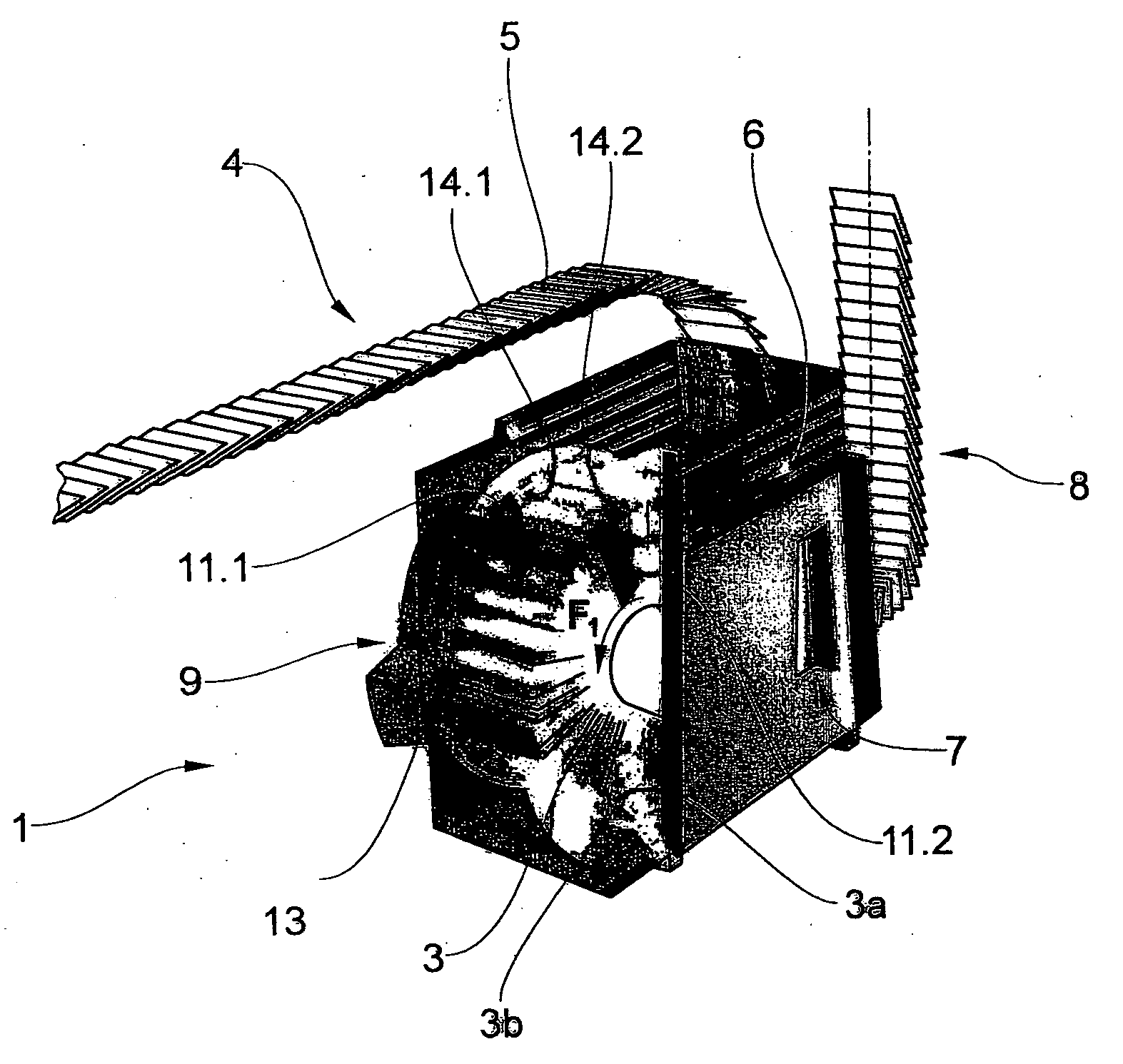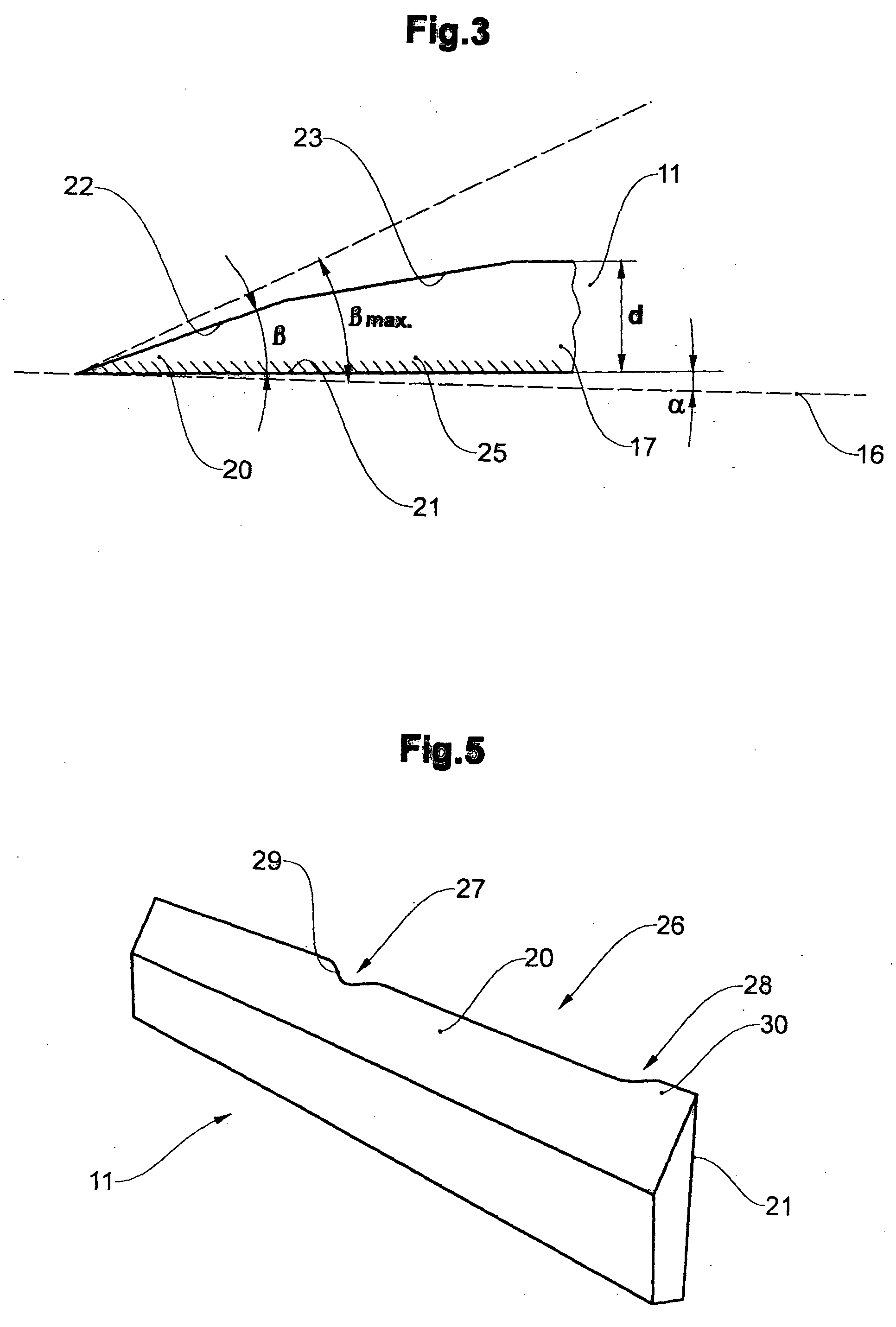Cutting device and cutting method for printed products
a cutting device and printing technology, applied in the field of cutting devices and cutting methods, can solve the problems of increasing the risk of damage to the cutting device, failure of the cutting device, and inability to cut, so as to achieve the effect of improving the cutting quality and the service life of the kni
- Summary
- Abstract
- Description
- Claims
- Application Information
AI Technical Summary
Benefits of technology
Problems solved by technology
Method used
Image
Examples
Embodiment Construction
[0035]FIG. 1 shows a conventional cutting-drum machine 1 with a drum rotor 2 which has a plurality of cells 3 revolving around its periphery. Each cell has a leading and trailing cell wall 3a, 3b. A feed conveyor 4 transports printed products 5, in this case in the form of an imbricated stream (scaled stream), to the cutting-drum machine 1. The printed products 5 are separated and fed, in a transfer region 6, to the drum rotor 2, and therefore in each case one printed product 5 is introduced into each of the cells 3, which revolve in the direction of the arrow F1. The drum rotor is driven by a drive 9 (not illustrated in any more detail here). Once the drum has revolved through approximately 300°, the printed products 5 are removed again from the drum rotor 2 at a removal location 7 and are fed here, once again in an imbricated formation, by a removal conveyor 8 to any other processing steps, such as insertion, stacking or bundling.
[0036]Two knives 11.1 and 11.2 are arranged, for th...
PUM
| Property | Measurement | Unit |
|---|---|---|
| bevel angle | aaaaa | aaaaa |
| bevel angle | aaaaa | aaaaa |
| thicknesses | aaaaa | aaaaa |
Abstract
Description
Claims
Application Information
 Login to View More
Login to View More - R&D
- Intellectual Property
- Life Sciences
- Materials
- Tech Scout
- Unparalleled Data Quality
- Higher Quality Content
- 60% Fewer Hallucinations
Browse by: Latest US Patents, China's latest patents, Technical Efficacy Thesaurus, Application Domain, Technology Topic, Popular Technical Reports.
© 2025 PatSnap. All rights reserved.Legal|Privacy policy|Modern Slavery Act Transparency Statement|Sitemap|About US| Contact US: help@patsnap.com



